Michigan vegetable crop report – July 26, 2023
Downy mildew is spreading.
Weather
Watch Jeff Andresen’s weather update.
The past week saw cooler temperatures 2-5 degrees Fahrenheit below-normal with most areas receiving at least 0.5-1 inch of rain, though southwest Michigan was dry.
The forecast calls for:
- Precipitation totals of just less than an inch to 2 inches are forecast for the upcoming seven days, with most falling today and totals highest in the southern half of the lower peninsula.
- Showers and thunderstorms spreading west to east across the state during the day into this evening. Strong/severe storms possible south.
- Fair, warm and humid Thursday.
- Showers and thunderstorms possible again statewide Friday into Friday evening.
- Fair and dry this weekend.
- High temperatures from the mid- to upper 70s north to the low 90s south Wednesday through Friday, falling back upper 70s to low 80s this weekend. Low temperatures generally in the 60s Thursday through Saturday falling back to the 50s to near 60 by late weekend.
- Medium range outlooks generally call for near to below normal mean temperatures and near normal precipitation totals.
- New seasonal outlooks call for near to above normal mean temperatures with no forecast direction on precipitation totals.
Weed of the Week
Ladysthumb (Persicaria maculosa) is a summer annual broadleaf weed in the Buckwheat family. It is identified by hairy leaves and jointed reddish stems with a papery sheath called an ocrea enclosing the leaf petiole at each node. Ladysthumb is distinguished from its close relative, Pennsylvania smartweed, by the presence of hairs on the ocrea of ladysthumb. However, both “smartweeds” are generally controlled with similar practices and chemistries.
Ladysthumb favors wet soil conditions and so is commonly a major weed in muck fields. Preemergents with efficacy against ladysthumb include Zidua (pyroxasulfone), Nortron (ethofumesate) and Lorox (linuron), among others. Post-emergents include Goaltender (oxyfluorfen), Moxy (bromoxynil), Nortron and Lorox. While there are herbicide options for ladysthumb control for some specialty crops grown on muck like dry bulb onions and celery, other muck vegetable crops like green onions and radishes have vanishingly few options. As always, an integrated weed management approach involving crop rotation, stale seed-bedding, mechanical cultivation (rotary hoeing, tine weeding), and other practices is beneficial in keeping populations under control.
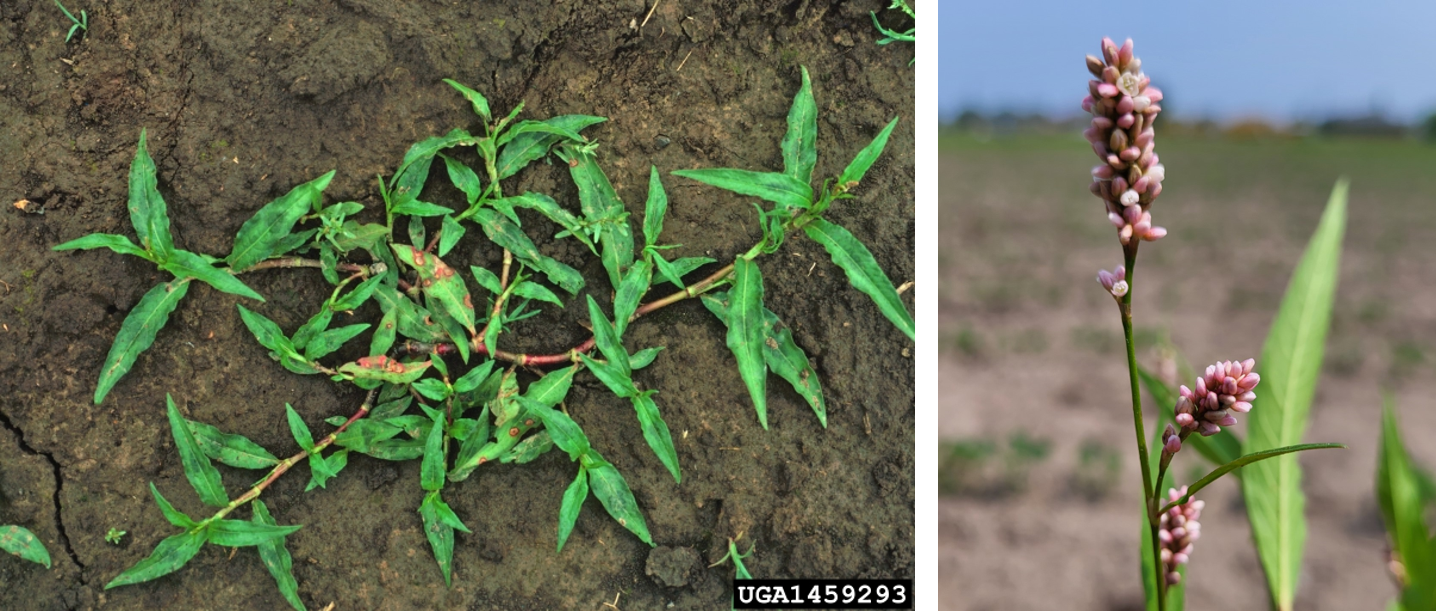
2023 MSU Extension Southeast Michigan Farmer Survey
MSU Extension is pleased to announce our 2023 Southeast Michigan Farmer Needs Assessment Survey. This survey will gather information about your farm and your potential interest in learning more about various farm-related topics. The information gathered will inform future programs and educational opportunities offered by MSU Extension educators for agricultural producers in southeast Michigan. This survey will take approximately 10 minutes to complete and is accessible at the link below:
Take the 2023 MSU Extension Southeast Michigan Farmer Needs Assessment Survey!
Feel free to share the survey link with other growers. We welcome any participation in the survey in order to help Michigan State University Extension better serve its communities.
QuickBooks survey
QuickBooks is one of the most widely used financial software packages for farm financial records. It is a powerful tool but using it effectively for farm businesses can be confusing. MSU Extension is partnering with the University of Wisconsin and University of Nebraska to develop educational resources for using QuickBooks for farm records effectively and efficiently. It would be greatly appreciated if you would complete a short survey that will help us better understand what is desired for QuickBooks educational programming.
Crop updates
Asparagus
Between 3-6 disease severity values (DSVs) had accumulated in the week ending Monday, July 24, at four sites MSU Extension is monitoring in Oceana County. DSV accumulation could ramp up in the next few days with the current high dewpoints. Azoxystrobin (e.g., Quadris, Sartori, A-Frame, AzoxyStar other generics) could be considered if/when there are a significant number of days with 3 and 2 daily DSVs (i.e., favorable purple spot weather). Otherwise, chlorothalonil or mancozeb can protect against purple spot and provide some help with rust. Any of these can be tank mixed with tebuconazole to add some rust protection.
Zack Hayden, MSU assistant professor, made an interesting observation in their irrigation trial this year: Weed control was starkly worse in non-irrigated plots. This is likely because these weeds flushed after shutdown herbicides were applied. Not much to do about it, but an interesting observation!
Japanese beetle and asparagus beetle continue to be present in some locations. The grower standard (carbaryl + permethrin) should be effective. Assail (active ingredient acetamiprid) has activity against both these pests as well.

Deer browsing has been one of the biggest issues this year. Past experience on some farms showed that three-wire, electrified fence can be erected around problem edges but needs to be put up ahead of time… if deer discover tasty treats they are determined animals. Read more about deer management here; no easy solutions.
Carrots and celery
For celery, variegated cutworm captures have been unusually high and consistent, and egg masses have continued to be spotted in the field. Aster leafhopper numbers have been mostly low but were higher in at least one location this week. Aphids have been present but so far impacts on plants have been limited. There are some products useful for multiple pests. For example, pyrethroids have activity against leafhoppers and caterpillars. The pre-mix Voliam Flexi (seven-day preharvest interval) includes caterpillars, leafhoppers and aphids on the label.
Carrot foliage has been relatively pristine to date, but keep an eye out as we head into this high dewpoint, rainy couple of days. It can be important to use highly effective fungicides, such as Merivon or the Luna materials, early in a foliar disease program especially when disease symptoms are present and the weather favorable for disease. These locally systemic fungicides can be alternated with chlorothalonil especially when spray programs begin prior to disease development or at just a trace of symptoms.
Cole crops and leafy greens
Caterpillars and at times aphids are present in organic cole crops. How to control them?
What organic insecticides work for caterpillars? We did a deep dive into trial reports, and discovered the active ingredients spinosad and Bacillus thuringiensis provided the most consistent control.
Bacillus thuringiensis is a soil bacterium that produces a stomach poison specific to caterpillars. It comes in two flavors that both work: Bt kurstaki (in Dipel, Javelin) and Bt aizawai (Xentari, Agree). Bt toxins paralyze caterpillar guts, feeding stops first and caterpillars then die in a few days. Some conclusions from work in Ohio cabbage trials were: (1) Frequency is important (seven days better than 14 days), (2) rate mattered less (0.5 versus 1 pound per acre Dipel DF were similar) and (3) daytime sprays are as effective as evening ones. Bt needs to be ingested, works better on smaller caterpillars and can degrade in sunlight, which is likely why frequency is important. It is effective against diamondback moth and imported cabbage worm, but may be less effective against cabbage looper, a migratory pest that tends to arrive later in the season.
Spinosad (e.g., Entrust 20SC) is another pesticide of microbial origin but has broader spectrum activity. Like Bt, caterpillars ingest it and die. It is effective against all three caterpillar species and may be a good choice if cabbage looper is also present.
What about aphids? Azadirachtin (e.g., Aza-Direct, Molt-X, etc) is a specific set of compounds extracted from the neem tree, it acts in many ways, including as an insect growth regulator that basically stops insects from growing. This was among the most consistent performer in examined trials, though it only provided suppression. It may help some with caterpillars.
Oils smother aphids by clogging the tiny holes in their skin they respire through. These include neem oil (e.g., Trilogy), which is basically what’s left after azadirachtin is extracted from neem seeds, but many other types of oils (e.g., Suffoil-X, JMS Stylet Oil, PureSpray Green, etc). They only kill by contact, so good coverage and repeated applications may be needed. One side benefit: Some oils could act as an adjuvant, spreading other insecticides across waxy cole crop leaves, providing a two for one. Other products include various microbials and the broad-spectrum material Pyganic (pyrethrins), which were less tested in trials.
Beneficials can help suppress both caterpillars and aphids; one strategy is to use products soft on beneficials so they can tag team pests along with organic insecticides. Bt products are non-toxic to beneficials as they are caterpillar specific. At the other end of the spectrum, Pyganic (pyrethrins) and to some degree spinosad has a broader spectrum of activity and could impact many beneficials. There is a lot of information on compatibility of pesticides and beneficials from the greenhouse industry; these are summarized in online tools where you search for a product a company sells and see its impact on one of the beneficials they market.
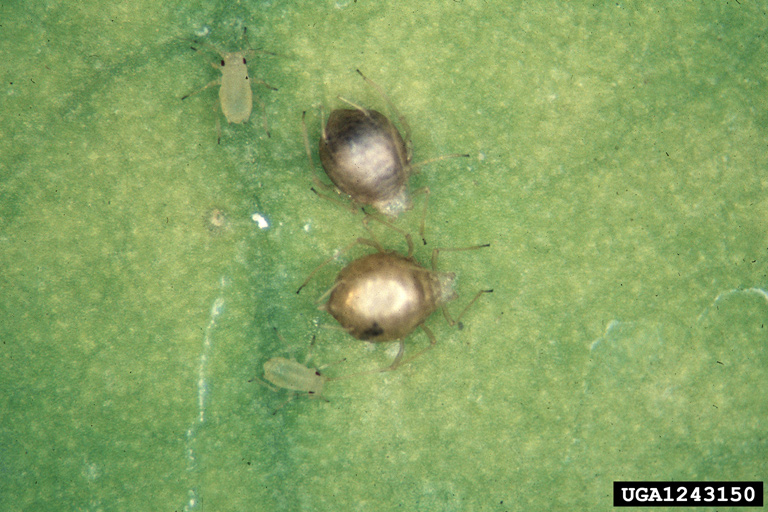
So, how to put it all together? Read this nice bulletin to understand pest biology. Consider using Bt products weekly to kill small diamondback moth and imported cabbage worm larvae, while conserving beneficials. If cabbage looper is present, consider switching to spinosad. Tap in an aphid material if needed. Last, make sure to use an adjuvant (e.g, NuFilm-P, one of the oils) to spread product across waxy leaves.
Cultural control practices like using exclusion netting can also work well on a small scale. Insect netting keeps the main moth pests from laying their eggs on brassica plants and reduces access for other pests like swede midge and flea beetles.
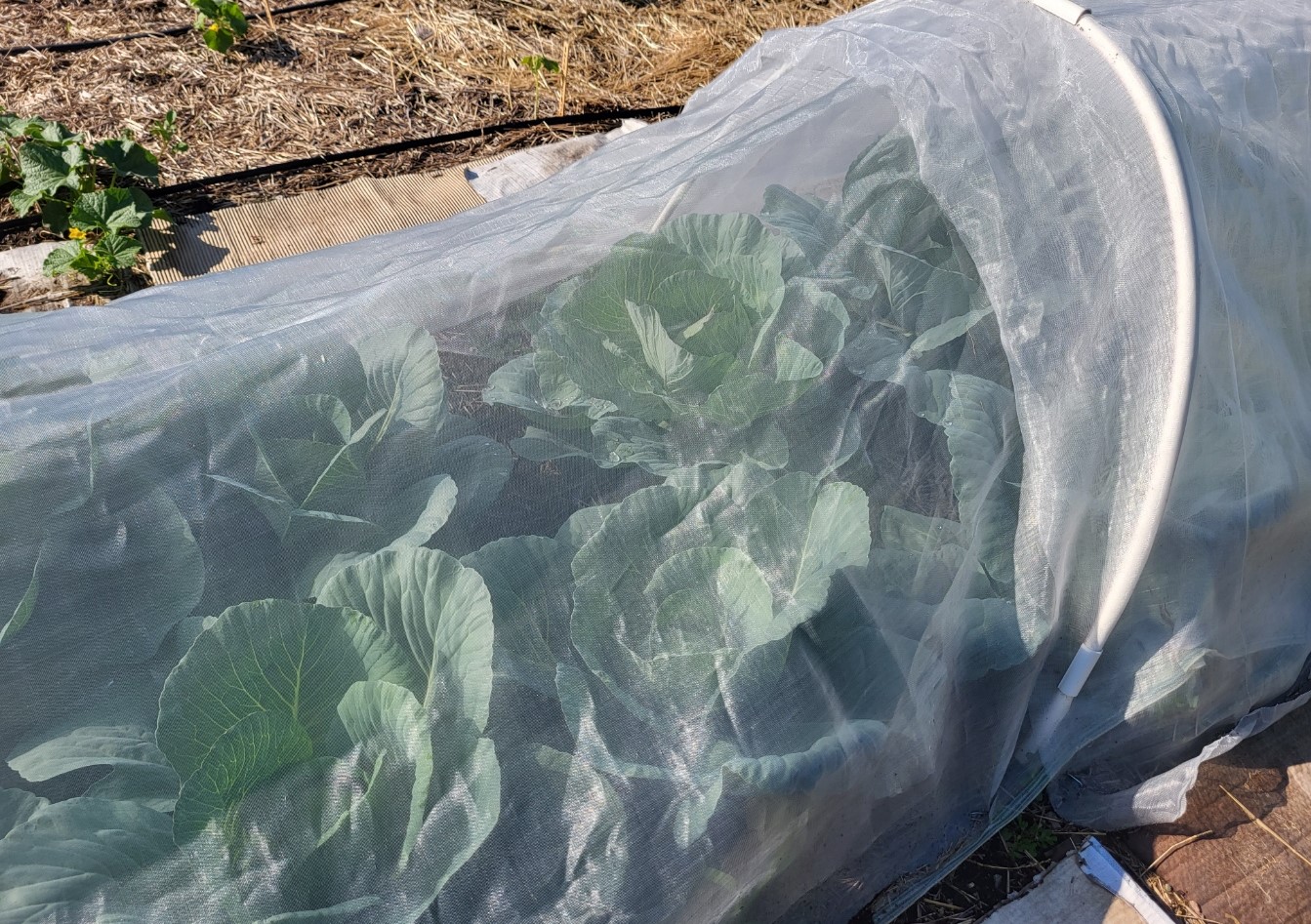
Cucurbits/pickles
Summer squash, cucumbers, pickles and melons are being harvested. Watermelons and hard squash are setting fruit. The conditions this week are similar to the conditions on June 27-28, which caused widescale fruit abortions that were noticed five to 10 days later. The conditions that match are hot days 90 F and above, and hazy air quality. We do not have the nights in the 50s that occurred at the end of June. Instead, they are in the 70s. But this may also have a suppressive effect on fruit set.
We received more reports of virus symptoms in squash this week. Here is a nice summary of different viruses in cucurbits from Meg McGrath at Cornell University.
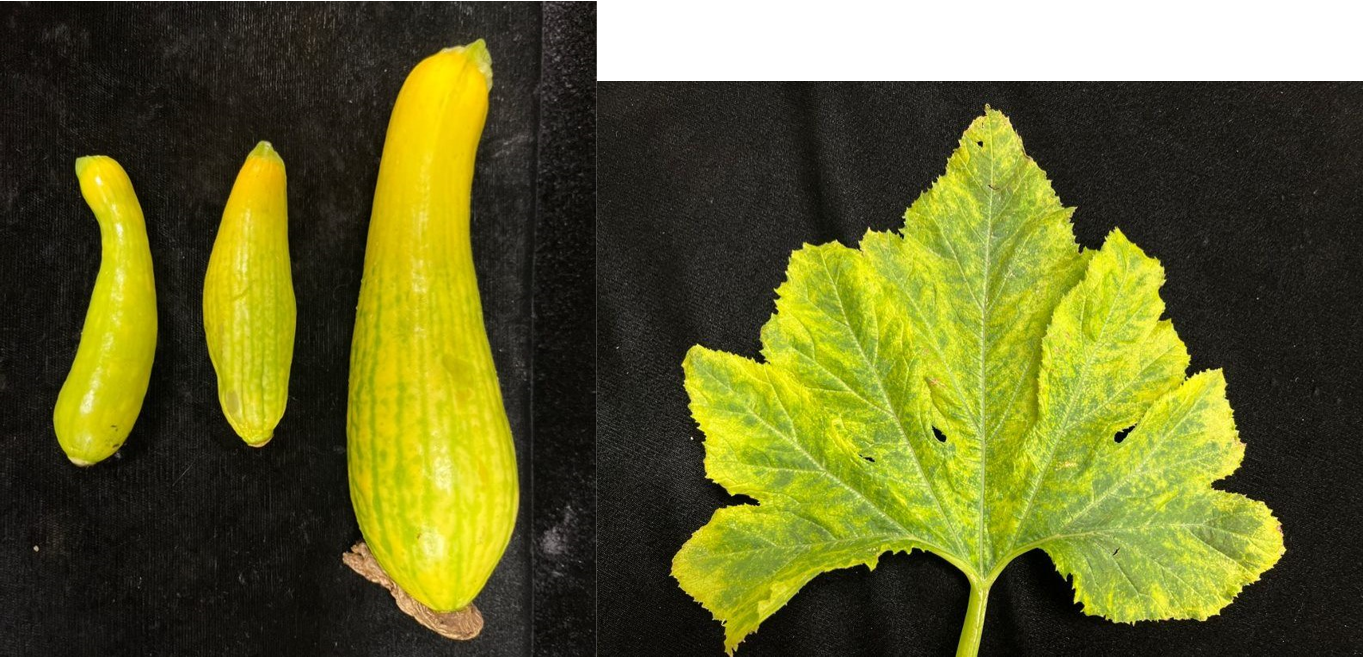
The first symptoms of cucurbit downy mildew disease on pickling cucumber plants in a commercial production field was verified by the MSU vegetable pathology lab in Saginaw County July 19, and there are new reports from Washtenaw and Monroe counties. The statewide spore trapping network to detect downy mildew spores in the air has had positives for Bay, Allegan, Monroe, Saginaw and Berrien counties. These results have been confirmed by qPCR. This indicates an influx of downy mildew sporangia in the state at a statewide level. Ohio State University is reporting the disease in several counties with some fields severely blighted.
The Hausbeck lab’s Downy Mildew News website is updated with the latest results of confirmed positives for field disease and spore trap air samples. The results from the spore traps are a few days behind due to processing of the spore tapes. We are able to distinguish between cucumber and hop downy mildew spores using molecular tools and both are reported. Visit the Downy Mildew News website for spore trap results and current downy mildew news. Each week on Thursday (late afternoon, early evening), the Downy Mildew News website is updated with the findings from the spore traps.
Suspect samples should be submitted for a diagnosis. Click here for instructions on how to submit samples.
While downy mildew development in the state was likely delayed due to the dry conditions early in the season the return of more frequent dew periods and rainfall is favorable for the cucurbit downy mildew pathogen (Pseudoperonospora cubensis). A rapid escalation of the disease is likely in the state if fungicide sprays are delayed.
It is very important that cucumber growers use proven downy mildew fungicides (shown below in alphabetical order). These fungicides were effective in our 2022 research field plots and include:
- Elumin + chlorothalonil or mancozeb
- Omega (Orbus) + chlorothalonil or mancozeb
- *Orondis Opti (chlorothalonil is part of the premix, additional chlorothalonil is suggested [see label for maximum chlorothalonil rates])
- Previcur Flex + chlorothalonil or mancozeb
- *Ranman + chlorothalonil or mancozeb
- Zampro + chlorothalonil or mancozeb
*Across many years of field tests, Orondis Opti and Ranman have been the leading fungicides in cucurbit downy mildew control in Michigan and would be especially recommended given the positive downy mildew air samples detected across the state and the positive disease sample from Saginaw County.
Fungicides should be alternated so that resistance of the pathogen to the fungicide’s active ingredient does not develop. It is important that the fungicides be applied prior to plant infection. Waiting until downy mildew has developed in the field prior to applying fungicides can lead to control failure and pathogen resistance. In many parts of the state, the second pickling cucumber crop has now been or soon will be planted. Downy mildew can infect the cotyledons of cucumbers and has been observed in previous years for late season plantings.
When it comes to cucurbit insect pests, many insecticides used for squash bugs and striped cucumber beetles are also harsh on pollinators and other beneficial insects. Assail (acetamiprid) is relatively less harmful to pollinators, but care should still be taken to minimize pesticide exposure to bees by following best practices like spraying in the evening, minimizing drift, and avoiding tank mixes containing chemical synergisms known to increase risk to pollinators. For more information, check out the MSU Extension Vegetable Pollinator Stewardship Guide and this MSU Extension article on pesticide usage when vegetable crops are blooming.
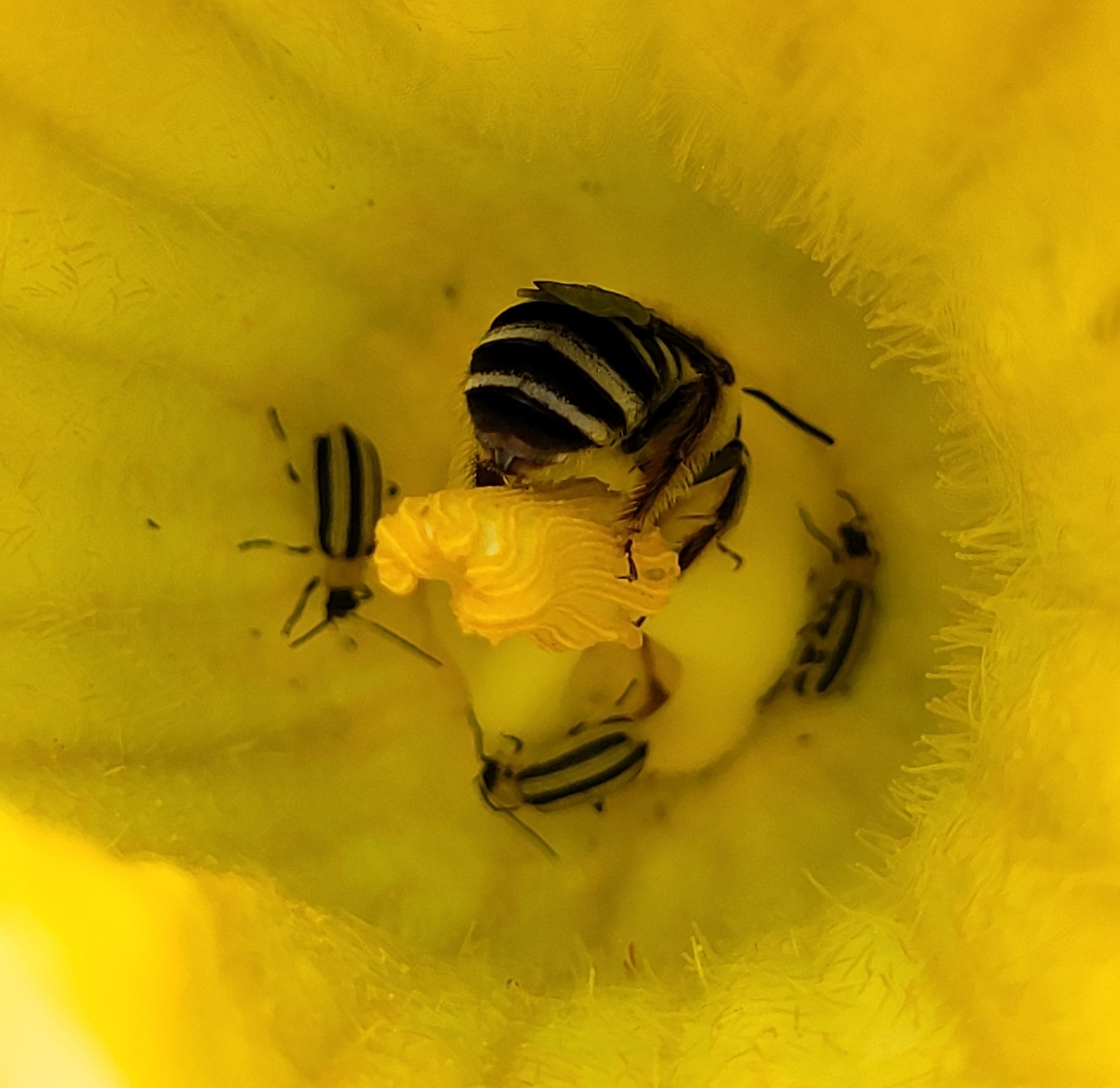
Fruiting vegetables
Field-grown tomato harvests began this week and now all the fruiting vegetables are going to market. Conditions have been favorable for development of foliar fungal and bacterial diseases, and Phytophthora has flared up in some fields. Late blight was identified in Ontario this week.
Garlic
Garlic harvest is well underway. Some wireworm damage on bulbs is being observed and some have noticed areas in the field with bulb rot symptoms.
Onions
Early, pungent yellow onion varieties were bulbing and reaching various sizes depending on the location as harvest approaches. Our dry start slowed them down in some areas.
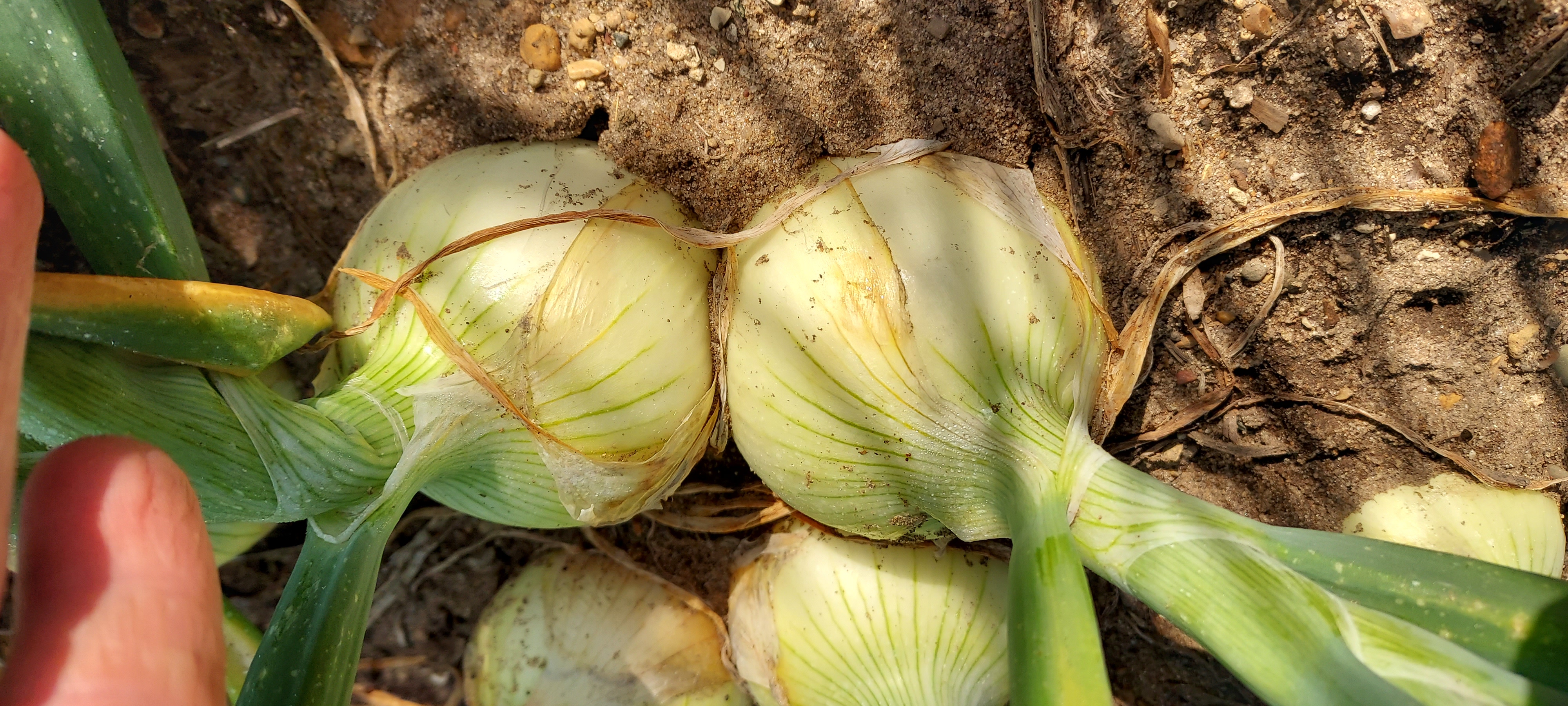
Stemphylium leaf blight is continuing to develop and challenge growers. Read more about control in this past report.
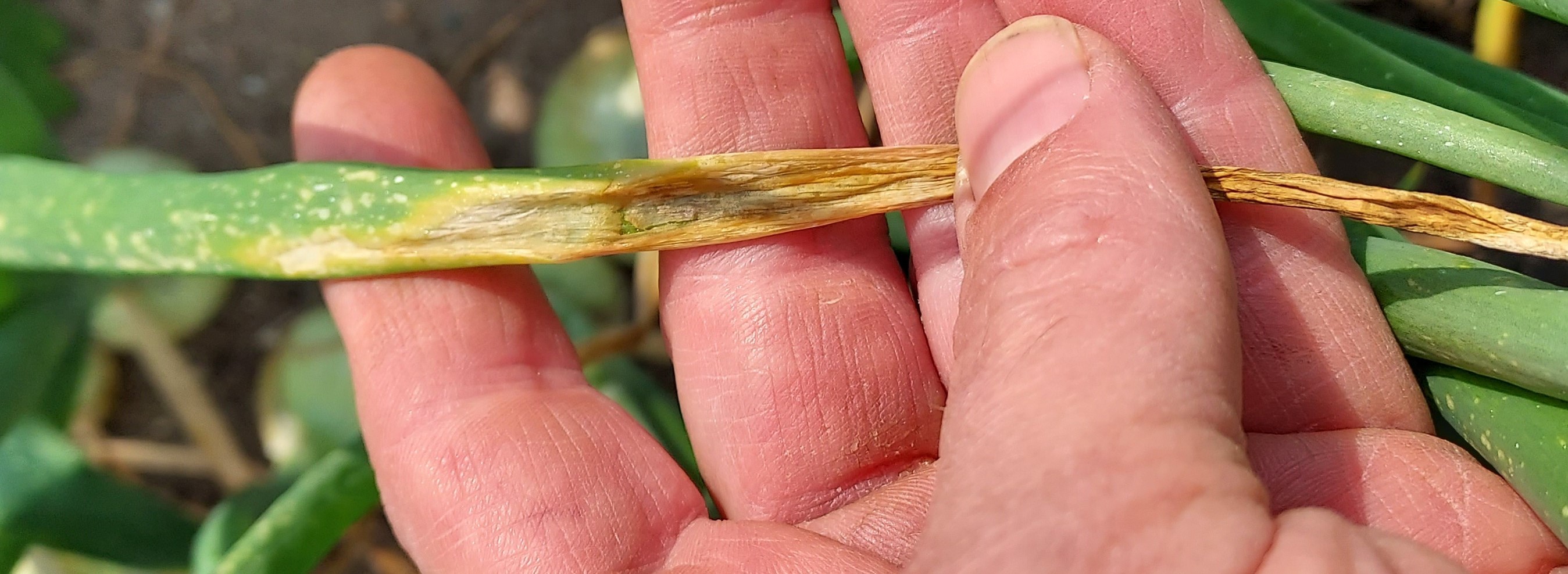
Looking for a “thrips hammer” besides Radiant? Exirel (one-day preharvest interval) has proven effective in Cornell University trials, and is recommended where Radiant does not seem to be pulling its weight anymore. The active is cyantraniliprole (also in Minecto Pro). A rate of 13.5-16 fluid ounces per acre is recommended if thrips are at 1.5-2.5 per leaf. A higher rate of 20.5 fluid ounces per acre is recommended if populations are higher. Check out Cornell’s spray program guide.
Potatoes
Early plantings are being dug as new potatoes. White mold apothecia has recently been found in central Michigan. Late blight has recently been detected in Ontario. Manage volunteer potatoes as they can be inoculum sources of late blight as well as hosts for Colorado potato beetle. Many nightshade weeds also serve as a food source for Colorado potato beetles populations and hairy nightshade has been found to be an alternate host of the late blight pathogen.
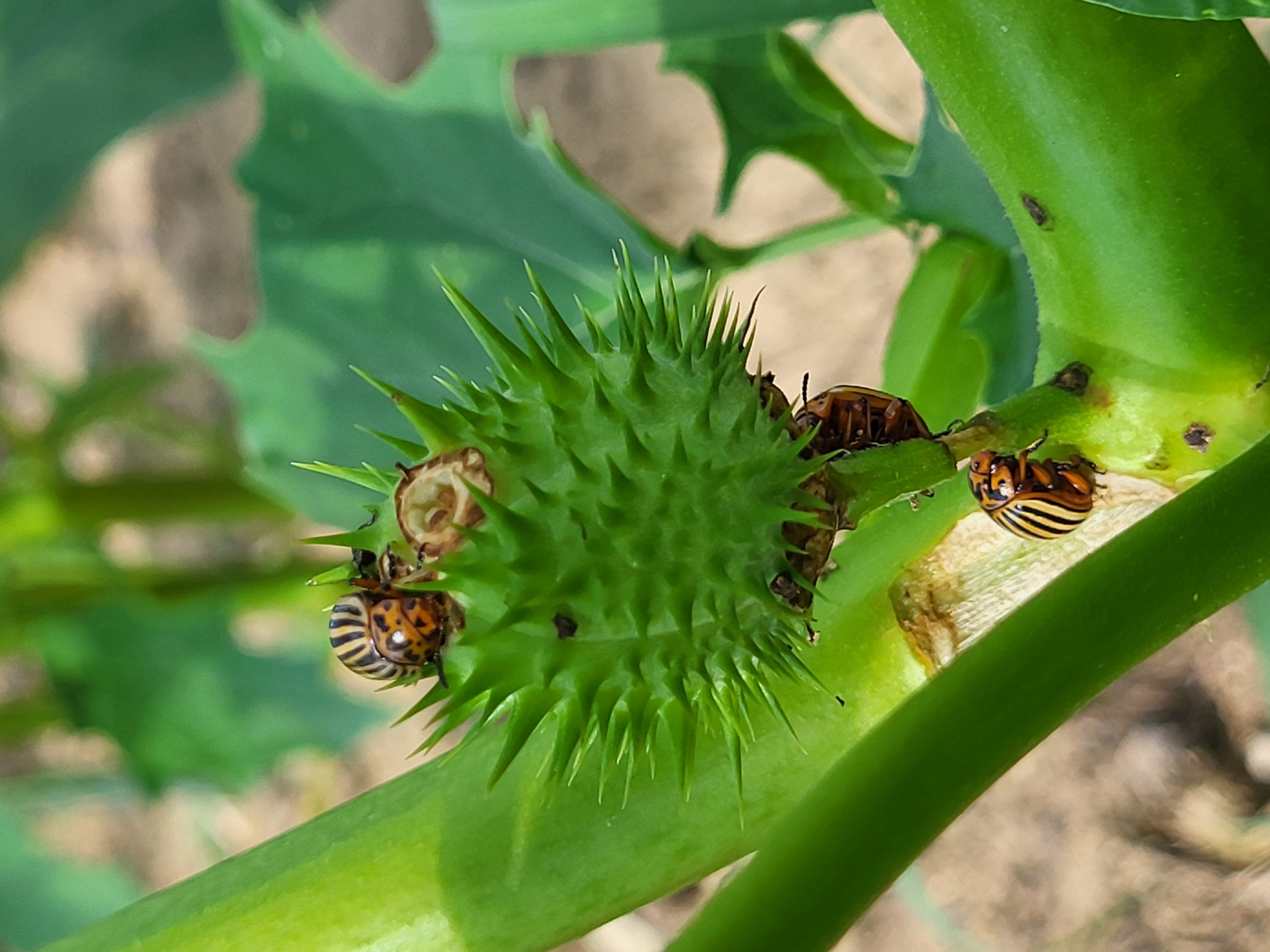
Sweet corn
Corn earworm was present but had not reached high levels in MSU traps, nor in traps in Ohio and Indiana. Insectforecast.com predicts no significant risk of additional migration for the five days. Any non-zero catch may warrant treatment in silking sweet corn. A five-day spray interval may suffice at captures of less than five per night in a steel trap (MSU Extension uses these). For the cloth traps, information on thresholds is here. Note, field corn is heading towards its reproductive phase in some areas; silking field corn is a magnet that can help alleviate pressure on sweet corn.
|
Corn earworm captures. Total in trap for week1 (avg # per night2). |
|||||
|---|---|---|---|---|---|
|
Week |
Ottawa Co. |
Oceana Co. |
Monroe Co. |
Wayne Co. |
Berrien Co. |
|
7/24 |
2 (<1) |
1 (<1) |
1 |
0 |
1 (<1) |
|
7/17 |
0 (0) |
0 (0) |
0 (0) |
1 (<1) |
- |
|
7/10 |
- |
0 (0) |
0 (0) |
0 (0) |
- |
|
7/3 |
- |
0 (0) |
3 (<1) |
0 (0) |
- |
|
1 Total number collected since last trap check. 2 Total number divided by the number of nights since the last trap check |
|||||
Western bean cutworm captures had increased both in west central MSU Extension traps, and also to our south in Ohio. Scout for egg masses to determine if this pest is an issue. Sweet corn that is just pre-tassel is most attractive to egglaying females.
|
Western bean cutworm captures. Total in trap for week1 (avg # per night2). |
||||
|---|---|---|---|---|
|
Week |
Ottawa Co |
Oceana Co |
Monroe Co. |
Berrien Co. |
|
7/24 |
112 (16) |
15 (2) |
0 |
7 (1) |
|
7/17 |
- |
8 (1) |
- |
- |
|
7/10 |
- |
1 (<1) |
- |
- |
|
7/3 |
- |
0 (0) |
- |
- |
|
1 Total number collected since last trap check; 2 Total number divided by the number of nights since the last trap check. |
||||
What to spray? Corn earworms can be managed with pyrethroid, diamide or spinosyn insecticides. Pyrethroids include Ambush/Pounce, Asana, Baythroid, Capture/Brigade, Hero, Mustang Maxx and Warrior. Diamides include chlorantraniliprole, which is in Besiege, Coragen and Vantacor. Spinosyns include spinetoram or Radiant. In some places, pyrethroids have produced unsatisfactory results because of the development of resistance.
On-Farm Food Safety
MSU and the Conservation Districts offer a program to visit your farm to go over your food safety program to provide critiques and comfort in a confidential fashion. You can then use these notes to make changes ahead of an actual inspection from MDARD. If you are interested in an On-Farm Readiness Review, please fill out this OFRR request survey to start the scheduling process (the sooner the better).
Events
- July 27, 7–8 a.m., Field Crops Virtual Breakfast: Bugs And More Bugs!
- August 3, 7–8 a.m., Field Crops Virtual Breakfast: Farm & Truck Vehicle Regulations And Safety
- August 3, 8 a.m. - 4 p.m., 2023 Montcalm County Field Day
- August 8, 9 a.m. - 12 p.m., MSU Extension Tillage Field Day
- August 8, 1-7 p.m., Specialty crop air and ground drone sprayer demos
- August 10, 7–8 a.m., Field Crops Virtual Breakfast: How To Get The Best Out Of Your Drainage System
- August 17, 7–8 a.m., Field Crops Virtual Breakfast: "Hot Topic" Q & A Session
- August 24, 7–8 a.m., Field Crops Virtual Breakfast: Timing The Last Irrigation Application
- August 31, 7–8 a.m., Field Crops Virtual Breakfast: Setting The Stage For Record Breaking Wheat Yields
- September 7, 7–8 a.m., Field Crops Virtual Breakfast: Marketing Your Grain Crops
- September 14, 7–8 a.m., Field Crops Virtual Breakfast: Monitoring Nematode Resistance In Soybeans
- September 19-21, Farm Science Review
- September 21, 7–8 a.m., Field Crops Virtual Breakfast: Fall Weed Control
- September 27, Wooster, OH, Midwest Mechanical Weed Control Field Day
This work is supported by the Crop Protection and Pest Management Program [grant no 2021-70006-35450] from the USDA National Institute of Food and Agriculture. Any opinions, findings, conclusions, or recommendations expressed in this publication are those of the author(s) and do not necessarily reflect the view of the U.S. Department of Agriculture.



 Print
Print Email
Email

